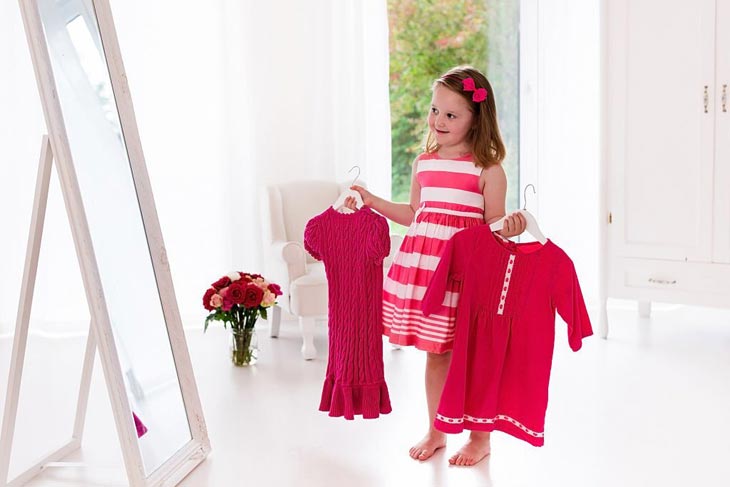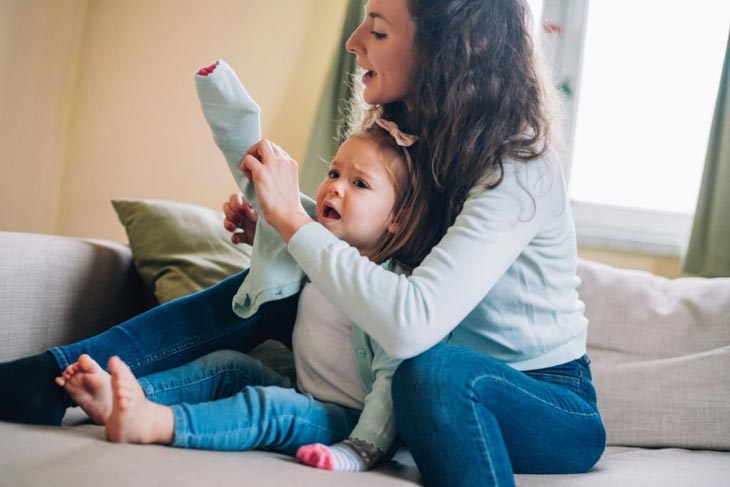Growing a kid is never easy, and the problems you may face seem endless. My child will only wear certain clothes is one of the issues that stress you out.
You and your kid are in a battle when it comes to dressing up, making you wonder: why does my kid want to wear the same clothes?
Don’t worry. We’ve got your back with explanations and useful tips to overcome the horrible time.
My Child Will Only Wear Certain Clothes – Why?

When your child insists on wearing or refuses to wear some types of clothing due to the materials of clothes, it can be because they have sensory issues with clothing or clothing sensitivity disorder.
Or they simply find those outfits comfortably, easy, and stylish to wear and make them confident.
There are some tips to troubleshoot the problem. First, let’s get to know the root of the matter.
Sensory issue
Why will my child only wear certain clothes? Some kids have stronger senses than others, and the sensory processing difficulties cause them to be over-sensitive to small details.
They may feel that the tag or seam keeps bothering them, making them uncomfortable wearing a certain outfit.
Comfort
When you have some clothes that bring you comfort, you will keep wearing them; so does your child.
Imagine when you give your 10-year-old boy wrong-size shoes. How inconvenient and irritated they are.
So there’s nothing wrong if your child refuses to wear jeans but black pants that he feels comfortable with.
Confident Feeling
It doesn’t matter whether we want to admit it; appearance is important, including what you wear. When you wear an outfit that makes you look good, you feel excited and confident.
It’s also the reason why your child prefers some specific items of clothing.
Style
What you wear can show your style. Your kid has his preference for beauty, and you can see it through the way he dresses.
Sometimes, the child keeps wearing some garment that he thinks it’s stylish.
Easy
Another benefit the clothes offer us is convenience. Your kid just wants to grab something easy to wear so he can return to his toys as fast as possible. It’s understandable, and you shouldn’t be worried.
Normal Preference Vs. Sensory Clothing Disorder
What Are The Signs Of Sensory Clothing?
Does my child have sensory issues with clothing? You can observe your kid and see if he has one of the symptoms below.
The kid’s reaction to clothes can range from not paying too much attention to small features, which prevents them from thinking of other things.
The children with issues usually feel tags, seams, or wrinkles touching them and easily get irritated. Sometimes, they don’t like to wear anything at all.
They tend to choose outfits that are inappropriate for the weather. For example, wearing shorts in winter and a long-sleeved shirt in summer. They also prefer too big or too small sizes for themselves.
Another sign is that the kid usually complains that the clothes make them too hot or itchy. They often scratch or adjust their clothes while playing.
A more serious symptom is if you separate a sensitive child with their “uniform”, they will show some agitated or aggressive behavior, such as tantrums and hitting.
The dressing process (for bedtime or before going out) is harder than others and usually entails crying and screaming.
Why Do Some Kids Have This Disorder?
Sensory sensitivity becomes a worth-concerning disorder when it affects the child’s emotions and behavior in normal life.
Some might have Sensory Processing Disorder (SPD), ADHD, neurological disorder, or autism spectrum.
The information of daily life comes to us through senses like ears, eyes, mouth, nose, and skin.
Children with sensory clothing issues are hypersensitive, and the feeling that the material of clothes is touching their skin can be irritating.
Besides, the sensory system plays a role in information modulation and habituation-learning.
Since these kids have difficulty processing sensory information, they get obsessed with the clothes on their bodies and can’t relax.
Moreover, children with autism tend to have temperature regulation problems. It’s when they don’t feel hot or cold as they are supposed to.
What Can You Do With A Child Having Sensory Clothing Issue?
How can I help my child with sensory processing disorder clothing? There are some ways to deal with the problem that you should consider.
Understandings
Trying to understand how it is uncomfortable for a child with clothing sensitivity feels helps calm you down in frustrating and exhausting situations.
It’s also a useful step in communicating with your kid. He can easily express his feelings to you as he knows you are there and understand him.
No force
Oppressing them to wear a pair of pants, change their T-shirts, or add extra clothing is definitely not a good way.
It makes everything worse; kids will just go against what you want because they think you don’t tolerate them.
Give Choices
The feeling of control gives kids confidence and comfort. You can offer them two pairs of shorts with different materials (lightweight fabrics or cotton), designs, and sizes.
Point out the differences to help them decide.
Time Control
Children with sensitivity tend to change quite often. For example, one thing that bothers them today might not be the one he has an offense with the next day.
So, it would help if you spent extra time understanding his preferences.
Plus, giving your kid plenty of time to dress on and telling him when he can take off his unfavorite clothes help him accept to wear them faster.
Sensory Friendly Clothing
Every kid is different, but in general, when it comes to clothing sensitivity, they usually complain about the seam, the size (loose or tight clothes), button type or not, etc.
Sensory-friendly clothes are available in the market where you can easily find comfortable pants that fit your kid. You just need to know what he likes and doesn’t like.
Ask For Help
If you think the everyday dressing-up process is overloaded, seek help. Sensory integration therapy or consulting with an occupational therapist is a good choice.
Tips To Overcome Sensory Clothing Disorder
Calming Pressure
Some firm pressure is helpful to calm the kids that are uncomfortable with clothes. If they like deep touch pressure, such as hugs, embrace them.
Squeezing their hands or forearms are also useful. Or you can try to give him a pat on the shoulders or back for a firm pressure.
Wilbarger Brushing Protocol
It is one type of professional method that certified occupational therapists usually use to cure children with tactile defensiveness, and it’s also applicable in your case.
The method is taking a specific brush and applying firm pressure on the kids’ back, arms, and legs. Consult with your OT if you think it’s needed.
Sensory Bins
Your child only wears certain clothes shouldn’t be your concern anymore if you improve your child’s tactile system and sense of touch. Sensational sand play is a great idea.
Besides sand, you can put different things with different textures in the bins, such as dry rice, finger paint, shaving cream, etc.
Encourage the kid to touch and play with it a couple of times. The more they have contact with different structures, the more familiar their senses will be, and their problem will improve.
Sensory Balance
Kids with clothing sensitivity tend to have similar issues with other aspects. For example, some gravitate to proprioceptive and vestibular input.
So giving them sensory balance exercises can develop the system and gradually ease the matter.
Conclusion

There is a light at the end of every tunnel. Now you know your kid has clothing sensitivity and also know the tips to solve the problem: my child will only wear certain clothes.
If you’ve tried all the possible approaches, but there is no or just little improvement, don’t give up. It’s just because your “tunnel” is longer than others.
Being patient and showing your carings to your beloved is key to success.
